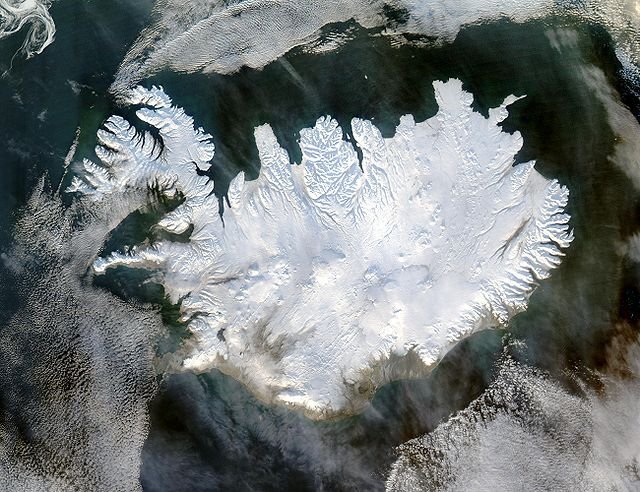11: Heretics and Heroes
The idea of plate tectonics is the cornerstone of modern geology.
But it wasn't always that way, and it wasn't an easy idea to sell. Today, we'll meet two scientists who faced ridicule for proposing continental drift: a German climatologist and an American cartographer, the greatest of her generation. We'll also meet a lost expedition to Greenland, the Mid-Atlantic Ridge, and Jacques Cousteau.
Extra credit: Look at maps of the ocean floor, or try to align the continents in various patterns on a map.
12: Scratching the Surface
How is new crust made, and why isn't the Earth constantly expanding like a party balloon? To answer these questions, we'll track the life, death, and rebirth of Earth's surface. Stops along the way include the Mid-Atlantic Ridge, a prize-fight between tectonic plates beneath New Zealand, and a stop for dessert on the Italian island of Vulcano.
Extra credit: Experiment with your carpets at home, pushing them together and testing which one sinks beneath the other.
13: Message in a Bottle
When did Earth's crust form?
It's easy to take the ground beneath our feet for granted, but the story of our crust's origins is one of the most hotly debated topics in Earth history. Today, we'll learn about how elements inside zircon crystals can help solve this mystery. In fact, the element hafnium was discovered inside a zircon by two researchers who also helped keep gold and scientists out of German hands in World War II.
Extra credit: Look at table salt under a microscope, or find different colors of quartz in your local mineral collections.
Miniseries: The Oldest Rocks in Africa
Miniseries Episode 3
Africa is a continent with many different nations and rocks. Today, we learn how most of Africa was fused together billions of years ago, and which pockets preserve the best evidence for ancient life (South Africa, Zimbabwe). Along the way, we'll meet the richest human in history, a giant knife made from magma, and a two-billion-year family reunion.
Miniseries: The Oldest Rocks in South America
Miniseries Episode 4:
South America has impressive geology, but most of its' ancient rocks are found in just once country. Today, we'll learn about ancient connections between Brazil and Africa, how Pangaea split apart, and how most iron mines got their start.
Miniseries: The Oldest Rocks in Asia
Miniseries Episode 5:
Asia is the largest continent, and has a lot of ancient rocks to share with the world. Today, we learn how to map a hidden continent using magnets, how copper forms in undersea castles, and how the Himalayas were born.
Miniseries: The Oldest Rocks in Europe
Miniseries Episode 6:
Most of Europe is very young, geologically- only millions of years old instead of billions. Today, we travel to eastern and northern Europe to see how its' modern borders match ancient shorelines, how coal is made, and a special type of granite you can probably find in your nearest city.
25: The Oldest Rock on Earth
How old is the oldest rock, where was it found, and what type of rock is it?
To answer that question, we'll journey into Canada's Northwest Territories, deep underground to the breaking point of rocks, and we'll run into a shrimpy friend from Episode 10.
26: The Magma Forge
What did the oldest rock look like 4 billion years ago, before it was pressure-cooked?
Today, we'll answer that question by melting chocolate chip ice cream, meeting one of granite's less famous cousins, and returning to our old friends: zircon crystals.
Extra credit: Eat some ice cream, go on a skiing trip, or both!
27: Rare Earth
Is there any place today that resembles the Earth 4 billion years ago?
Surprisingly, the answer is yes... ish. Today, we'll learn a secret recipe for continents, one that made the very oldest rocks on Earth and is still making the island of Iceland today.
Along the way, we'll freeze a magma chamber solid, meet some politically contentious metals, and cross a real bridge from one tectonic plate to another.
31: Trench Warfare
What are Earth's oldest volcanic rocks, and how did they form?
Today, we'll explore the seafloor 3.8 billion years ago through dark basalt rocks in Nuvvuagittuq, northern Quebec. Along the way, we'll earn a green belt in geology, rest our heads on volcanic pillows and journey to the deepest spot in the modern ocean.
Extra Credit: Try to find dark black basalt in a building or countertop near you.










